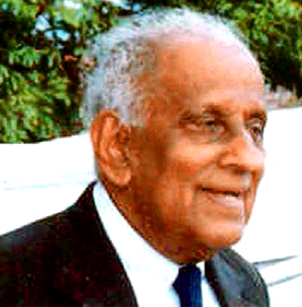Under Loknath Mishra, Raj Bhavan became a hub for 'water mantra'; Administration collapsed
Chalie Kevichusa killed in Dimapur on Sept 23, 1992
New Delhi
In 1997 during the United Front regime, facing the interview Board of Press Trust of India (PTI) for my job, I was asked by Justice (Retd) H R Khanna, "according to you who can be called the best Nagaland Governor".
Promptly, I said, "Governor B K Nehru ..." and I did add to say, "Most Governors in Nagaland courted controversies".
"Why not L P Singh?," asked Justice Khanna and I said, "People relate him to the Shillong Accord and the major controversies thereafter and even underground split".
Today, in circa 2022, one remembers a few Nagaland Governors with whom I interacted often in confidence and also saw their stints jump from one end to the other.
Governor Gopal Singh was the first 'exclusive Governor' but he did not leave much of an impression.
Prior to moving to Nagaland, he had some problems in Goa as well and during his stint in Kohima, the then Leader of the Opposition K L Chishi had problems with him.
But Chishi was fortunate to have Nagaland's first Christian Governor Dr M M Thomas, an human rights activist and a hardcore anti-Congress public leader from Kerala.
During Emergency (coincidentally that was imposed on June 25, 1975), Dr Thomas led the 'opposition
parties' in their resistance to the diktats of Indira Gandhi.
Hardly a week at Kohima Raj Bhavan for Dr Thomas, the S C Jamir ministry was reduced to minority as
likes of C Chongsen Chang, Tiameren, Chubatamjen Ao and Neiphiu Rio moved out of the ruling
party. As expected, Congress power-shenanigans were on and games started.
Rajesh Pilot and S S Ahluwalia airdashed as AICC observers. Speaker T N Ngullie disqualified 10 members
saying it was not one-third as two members Chubatemjen Ao and T A Ngullie were expelled from Congress.
Dr Thomas was hardly impressed and he dismissed Jamir and invited K L Chishi to form the government.
On May 16, the Chishi ministry was sworn in. The Governor even declined to meet two AICC observers saying their
views were not relevant for 'Nagaland politics'.
But Chishi was toppled the very next month as NPC members decided to join hands with the Congress and Joint Legislature Party (JLP) ministry headed by Vamuzo, then a non-MLA, took over powers.
Nagaland Page
In fact, Vamuzo was then Working President of NPC and so Chishi complained, "As Leader of the Opposition,
I worked hard to topple the Congress ministry, but my government was toppled by the organisational wing of the
party".
Chalie Kevichusa as NPC secretary general sided with Chishi and finally the NPC split and the Vizol camp
walked away with the party symbol Cock as well.
But no sooner Vamuzo took over reins and his interaction started with Thomas quite regularly, the Governor
realised Vamuzo was more 'hard core' anti-Congress. For floor coordination, Chishi started working closely
with Congress and Jamir.
But he did not forget or forgive the betrayal and power-games played by two stalwarts in their own rights
-Vamuzo and Jamir.
"The Jamir- Vamuzo alliance was like dogs in love, they never met face to face. Jamir's interest was revenge
and Vamuzo's interest was power thus they became strange bedfellows and I became a target," Chishi said
later.
In fact, during the tenure of Governor Thomas only, Thenucho as Speaker disqualified 15 legislators
- 10 NPC and five Congress.
The decision was challenged in Gauhati High Court and when the verdict came, Jamir staked a claim, but
the Governor rejected it. Instead he advised all to maintain 'calm' till the Supreme Court verdict came.
Dr Thomas was soon identified as an 'anti-Congressman' at the gubernatorial office and was even
tagged the sarcastic name 'Misa Misi Thomas'.
In 1992, Vamuzo recommended dissolution of the state assembly and Dr Thomas readily obliged him.
Chishi lashed out at the Governor saying he applied "emotional yardstick" to allow Vamuzo continue as caretaker CM.
Jamir and Chishi and other opposition members rushed to Delhi and ensured that the P V Narasimha Rao
government replace Thomas and also impose President's Rule.
Of course the decision to deny 'caretaker status' to Vamuzo was criticised overwhelmingly by naional
press, constitutional experts and opposition parties.
The man who replaced Thomas was Loknath Mishra, who was then also the Governor of Assam.
Dr Thomas was sacked by Rao government as he declined to sign suspension order on Chief Secretary S S Ahluwalia.
Under Mishra, Raj Bhavan became a hub of 'water mantra' therapy. The administration collapsed
and militants and various ultra groups roamed about freely and attacked and eliminated
people they wanted to.
This dispensation had turned 'more Congress' than the real Congress regime perhaps. One ADC to the Governor
(an army Capt) became very powerful.
The President's Rule stint from April 2, 1992 till April 22, 1993 allegedly saw rampant corruption and gross killings
of public leaders, police officials, innocent civilians and a host of underground militant cadres.
Nearly 100 people might have died in separate incidents during one year and 20 days.
Sadly for us in the media, senior journalist Chalie Kevichusa, president DLP, was shot dead in broad daylight on Sept 23, 1992, in Dimapur and one faction took the responsibility as well.
In fact, Chalie's wife later wrote a letter to the militant organisation registering her protest.
In Delhi, there was assassination attempt on the life of Jamir at 29 Aurangzeb Road, Nagaland House.
The next morning, ( November 20, 1992) Kohima had a public function at the old Zonal Council Hall for the launch of the newspaper 'Nagaland Observer'
as a daily. Assam Chief Minister Hiteshwar Saikia was the chief guest. The banner headline was -
'S C Jamir shot at'.
(To be continued)





No comments:
Post a Comment